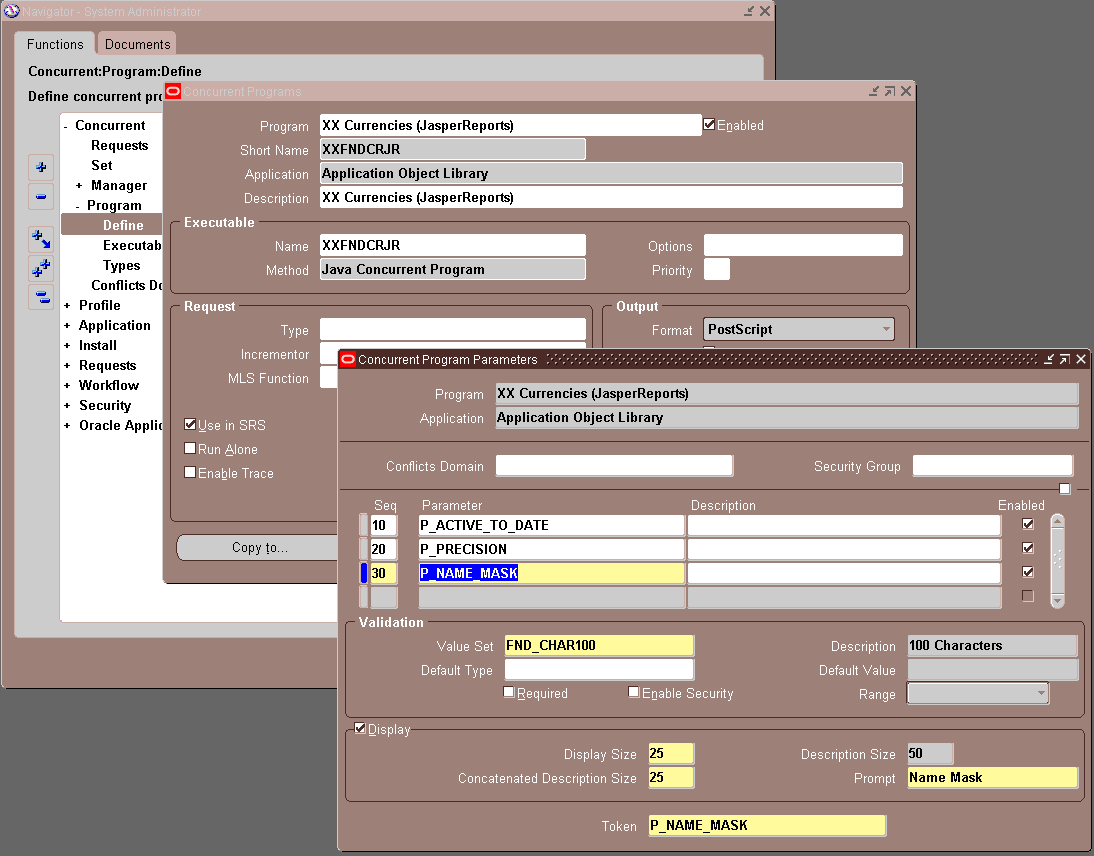Token In Concurrent Program Parameters
We need to use FND_PROGRAM.PARAMETER api to create an concurrent program parameter from backend database. Concurrent Program and its Parameters.

Control the Behavior of Request Parameters (User, System Administrator, and Flexfields Help) Control the Behavior of Request Parameters The behavior of parameters in programs running individually may differ from when those programs are run as part of a request set. See: You define how a program's parameters behave when you define the program using the Concurrent Programs form.
Using the Request Set form, you can also define how a program's parameters behave when the program is run as part of a request. In addition, you can define parameters in different programs in a request set to all share the same value by labeling them as Shared Parameters. Warning: Modifying a concurrent program's definition by adding new or deleting existing parameters, or changing a parameter's value set can prevent the program from running. Not Displaying Parameters • is a good security measure, guaranteeing a desired default value is used • means you should enter a valid default type and value at either the program's definition, or if the program is part of a request set, at the request set's definition. Parametric Array.
Warning: Set defaults for required parameters before setting the Display field to No. Otherwise the Submit Requests form returns an error when attempting to submit the program. If you define a parameter to not display, using the Request Set form, then the parameter does not appear on the Submit Requests form when the program is run as part of a request set. Viewing displayed parameters after a request is submitted When a parameter is set to not display, it does not appear in the Details block of the Concurrent Requests form. These displayed parameter values exactly match the values that the concurrent manager passes to the concurrent program, and may or may not correspond to the displayed value that the user chose. For example, in the Submit Requests form, the user may choose 'Oracle General Ledger' as a parameter, but the corresponding application ID displays in the Concurrent Requests form. Suggestion: If your users encounter errors when running a program, you can look at the exact values that the concurrent program uses to help you diagnose the problem.
Setting Default Values for Parameters You can set a default value for a parameter using the: • Default Type and Default Value fields in the Concurrent Programs form. These values cannot be changed on the Request Set form. • Default Type and Default Value fields in the Request Set form. This default definition applies only when the program is run as part of a request set.
• Shared Parameter and Default Value fields in the Request Set form This default definition applies only when the program is run as part of a request set. All parameters labeled with the same shared parameter label default to the value you set in the Default Value field. Entering erroneous default values If the Default Type or Default Value for a parameter is incorrect, when the program is being set to run using the Submit Requests form, a window displays along with an error message. If the parameter is not displayed, you receive an error message. You cannot update a field that is not displayed. Warning: Be careful when entering the default type and default value, because these values are not validated with the value sets for your parameters. If you enter incorrect values, they do not appear as defaults when you run this request set using the Submit Requests form.